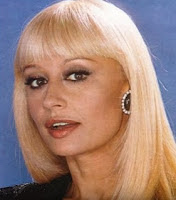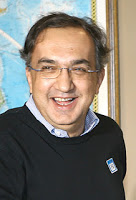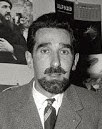Pier Luigi Nervi - architect
Striking designs from football stadiums to churches
The brilliant structural engineer and architect Pier Luigi Nervi was born on this day in 1891 in Sondrio, an Alpine town in northern Lombardy at the heart of the Valtellina. Nervi made his mark with a number of strikingly original designs at home and abroad and was noted both for his innovative use of reinforced concrete and his multi-dimensional designs, which enabled him to create structures that were both strong and elegant. His major works in Italy include the Palazzo del Lavoro in Turin, the bell tower of the Chiesa del Sacro Cuore in Florence and the Papal Audience Hall at the Vatican City, as well as a number of important sports facilities. The Stadio Artemio Franchi (formerly the Stadio Communale) in Florence - home of the Fiorentina football club - was one of his first important projects and he designed several stadia for the Rome Olympics in 1960, including the Stadio Flaminio and the Palazzo dello Sport EUR. Around the world, the UNESCO headquarters in Paris, the George Washington Bridge Bus Station in New York, the Stock Exchange Tower in Montreal, St Mary's Cathedral in San Francisco and the Italian Embassy in Brasilia are among Nervi's legacy. Read more…
___________________________________________________________
Pope Paul VI
Pontiff who helped wartime prisoners
Giovanni Battista Enrico Antonio Maria Montini was elected as Pope Paul VI on this day in 1963 in Rome. He succeeded Pope John XXIII and immediately re-convened the Second Vatican Council which had automatically closed after Pope John’s death. Pope Paul then implemented its various reforms and as a result had to deal with the conflicting expectations of different Catholic groups. Following his famous predecessor Saint Ambrose of Milan, Pope Paul named Mary as the Mother of the Church. He described himself as ‘a humble servant for a suffering humanity’ and demanded changes from the rich in North America and Europe in favour of the poor in the third world. Pope Paul had been born in Concesio near Brescia in 1897 and was ordained a priest in Brescia in 1920. He took a doctorate in Canon Law in Milan and afterwards studied at various universities, therefore never working as a parish priest. He had one foreign posting, to the office of the papal nuncio in Poland. After the outbreak of the Second World War, he created an information office for prisoners of war and refugees, producing more than 11 million replies to enquiries about missing persons. Read more…
__________________________________________________________
Paolo Soleri - architect
Italian greatly influenced by Frank Lloyd Wright
The groundbreaking architect and ecologist Paolo Soleri was born on this day in 1919 in Turin. Soleri is largely remembered for the Arcosanti project, an experiment in urban design in the Arizona desert that was like no other town on the planet, a unique fusion of architecture and ecology. Originally conceived as providing a completely self-sufficient urban living space for 5,000 people when it began in 1970, only about five per cent of the proposed development was ever completed. At its peak, Arcosanti’s population barely exceeded 200 yet the buildings Soleri erected in accordance with his vision are still there, rising from the desert as an assortment of concrete blocks, domes and soaring vaults, resembling a cross between the remains of some ancient civilisation and a set from Star Wars. It has never been abandoned, however, and although Soleri died in 2013 the project is still home to between 50 and 100 of his most ardent disciples, still seeking to live as Soleri envisaged. Although Soleri grew up in Italy, it was a visit to the United States in 1946 that had the most profound influence on his life. Read more…



























